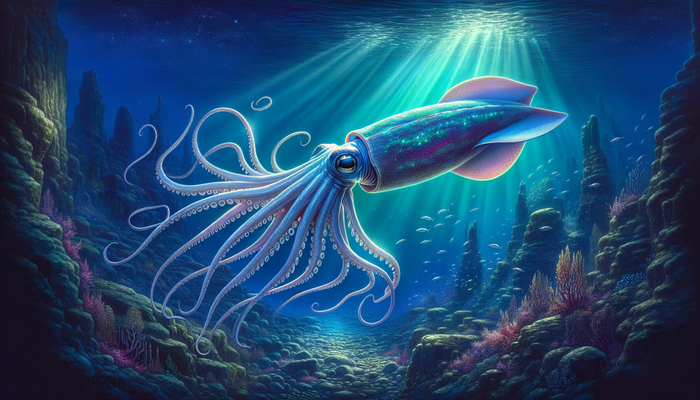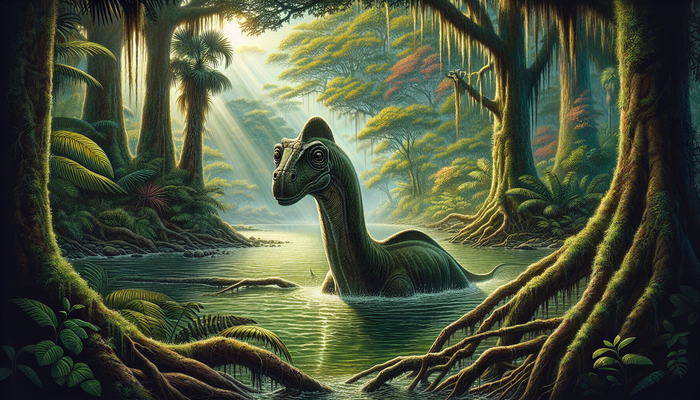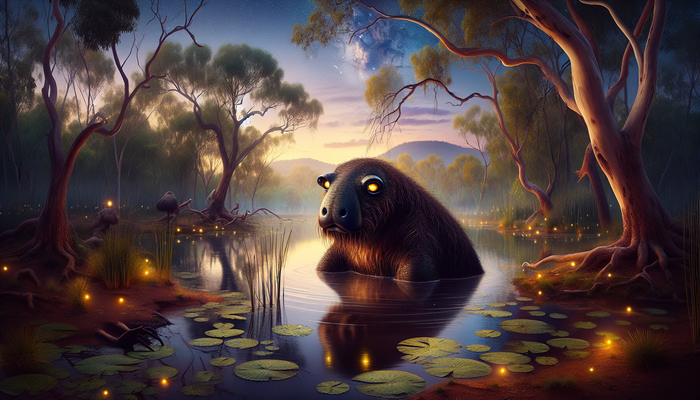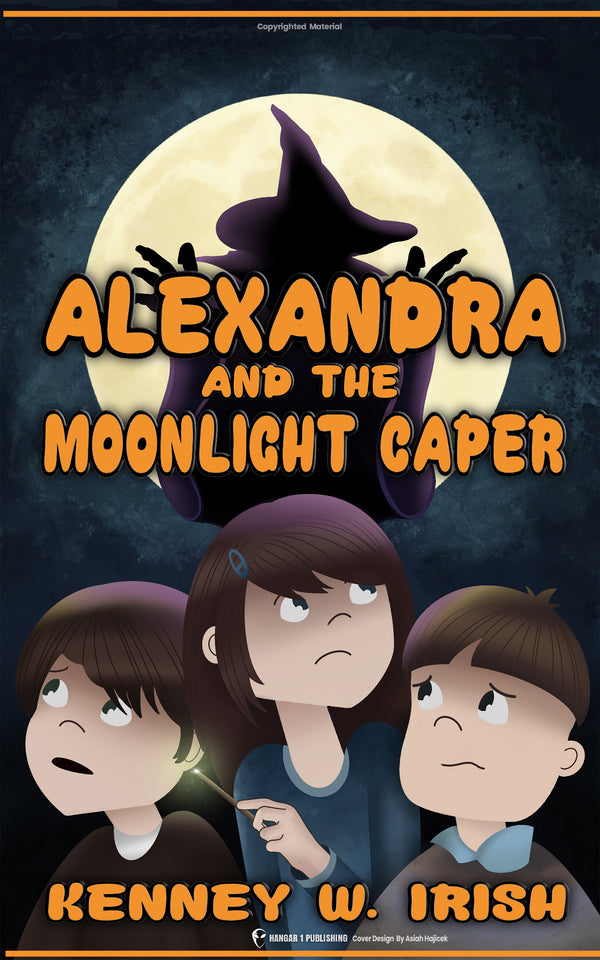Aquatic Humanoids: Legends, Sightings, and the Enduring Allure
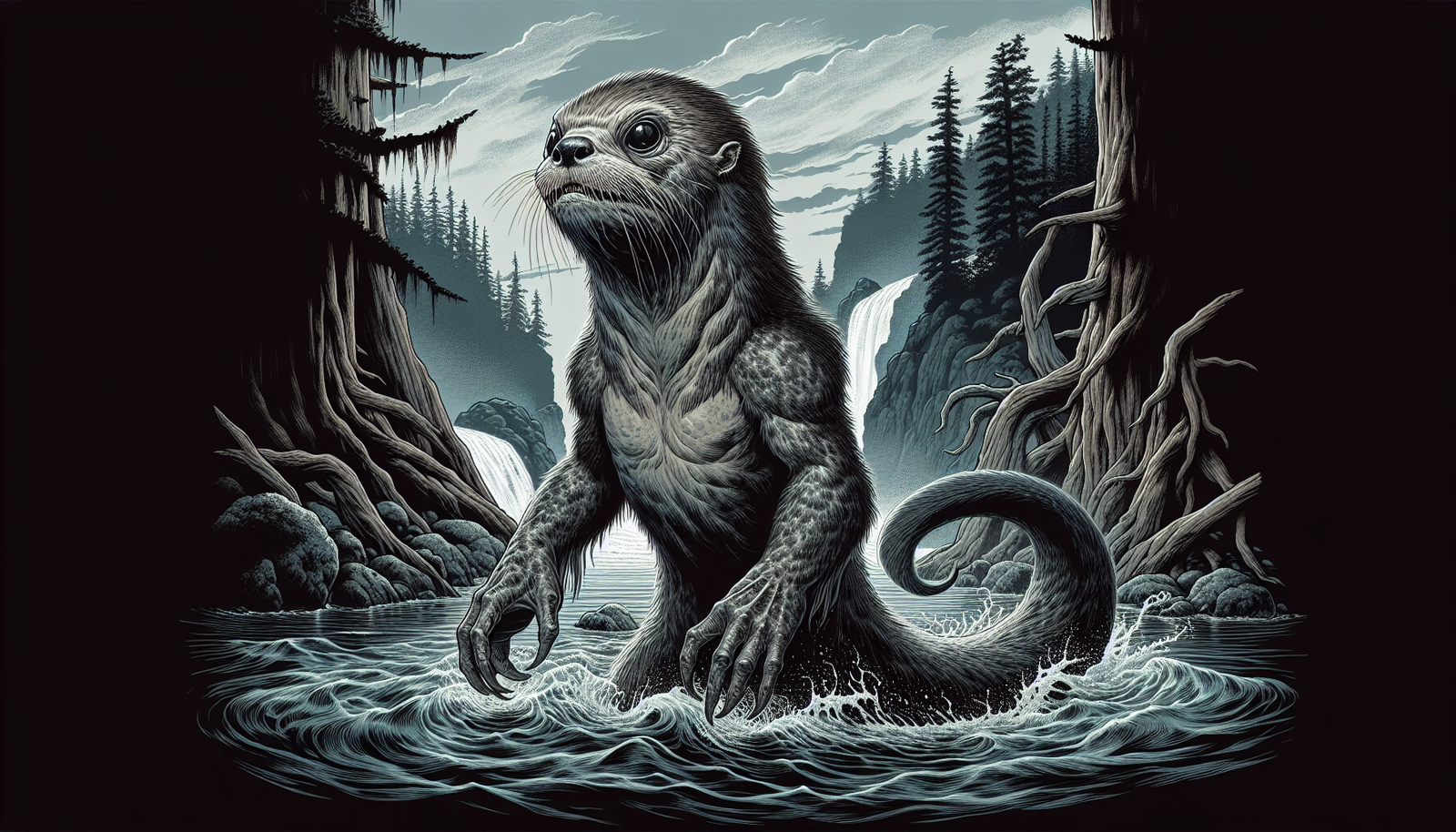
By Wade Beaumont, Cryptozoologist
Howdy, folks! Wade Beaumont here, and let me tell you, in all my years of exploring the wild and unexplained, few things have captured my imagination quite like the mysteries of aquatic humanoids. These enigmatic beings, with their blend of human and aquatic characteristics, have been the stuff of legends and fascination for as long as humans have been spinning tales. From mermaids and mermen to lesser-known creatures like the Kushtaka and Finfolk, the sheer diversity of aquatic humanoid lore is enough to make your head spin.
Now, I know what you might be thinking - "Wade, aren't these just old fish tales?" Well, that's where you'd be wrong. You see, the fascination with aquatic humanoids ain't just about pretty stories and fairy tales. It's about something deeper, something that speaks to the very core of what it means to be human. These legends, sightings, and enduring allure of aquatic humanoids are a testament to our primal connection to the water, our yearning to unravel the mysteries of the deep, and our unending quest to push the boundaries of what we know.
So, buckle up, folks, because we're about to dive headfirst into the captivating world of aquatic humanoids. We'll explore the rich tapestry of legends and folklore from around the globe, examine the most intriguing historical sightings and encounters, and even delve into the controversial Aquatic Ape Theory. By the time we're done, you'll see these mysterious beings in a whole new light, and maybe, just maybe, you'll start to wonder if there's more to these tales than meets the eye.
The Rich Tapestry of Aquatic Humanoid Legends and Folklore
Now, when most folks think of aquatic humanoids, the first thing that comes to mind is mermaids and mermen. And who can blame 'em? These half-human, half-fish creatures have been capturing our imaginations for centuries, with tales of their beauty, their enchanting songs, and their mysterious underwater kingdoms. From the sirens of Greek mythology to the African Mami Wata and the Asian Ningyo, mermaids and mermen have made their mark on cultures across the globe.
But here's the thing - mermaids and mermen are just the tip of the iceberg when it comes to aquatic humanoid lore. Take the Kushtaka, for example. These "Land Otter People" from the Pacific Northwest and Alaska are said to be shape-shifters, luring unsuspecting humans to their doom by taking on the appearance of loved ones. The legend goes that if you're ever rescued by someone you thought had drowned, you best be on your guard - it might just be a Kushtaka in disguise, ready to drag you down to their underwater lair.
Then there's the Gonakadet, or Wasgo, a creature that's part sea-wolf, part killer whale. The most famous tale about this beast involves a young man who manages to trap and skin a Gonakadet, using its hide to transform himself into the creature and hunt for his family. It's a story that blurs the line between human and animal, and it speaks to the power and allure of shape-shifting in aquatic humanoid lore.
Over in Scotland and Ireland, you've got the Finfolk, shape-shifting seducers who can take on human form to lure unsuspecting victims into the water. These legends are a testament to the dangers of the sea, and the idea that beauty can often mask a deadly intent.
And let's not forget about the Vodyanoy, the guardian spirit of water in Slavic mythology. With his frog-like head and human body, the Vodyanoy is said to control all aquatic life, rewarding those who respect the water and punishing those who don't. It's a legend that speaks to the importance of living in harmony with nature, and the consequences of failing to do so.
Finally, we have the Yacuruna of the Amazon rainforest, a race of underwater city dwellers with backward-facing heads, hands, and feet. These creatures are said to hold the key to shamanic knowledge and healing, and their legend is a reminder that sometimes, the most valuable wisdom can be found in the most unexpected places.
What ties all these legends together, beyond their aquatic nature, are the common themes and motifs they share. The duality of human and inhuman characteristics, the allure and danger of the aquatic realm, the power of shape-shifting and transformation - these are the threads that weave through the rich tapestry of aquatic humanoid folklore, creating a picture that is at once fascinating and unsettling.
But legends are one thing - what about real-life encounters with these mysterious beings? Well, buckle up, folks, because we're about to dive into some of the most intriguing historical sightings and encounters with aquatic humanoids.
Historical Sightings and Encounters with Aquatic Humanoids
Now, I know what you might be thinking - "Wade, these are just stories, right? There's no way people have actually seen these creatures in real life." Well, that's where you'd be wrong, my friend. Throughout history, there have been numerous accounts of folks claiming to have encountered aquatic humanoids, and some of these stories are enough to make even the most skeptical among us sit up and take notice.
Let's start with one of the most famous accounts - Christopher Columbus's alleged mermaid sighting. That's right, the man who "discovered" the Americas (never mind the millions of people who were already living there) claimed to have spotted mermaids during his travels. In his journal, Columbus described these creatures as not being as beautiful as they were depicted in folklore, with more masculine features. Now, most scholars today believe that what Columbus likely saw were manatees or dugongs - large, aquatic mammals that can sometimes appear human-like from a distance. But still, the fact that one of history's most famous explorers claimed to have seen mermaids is pretty darn intriguing.
Fast forward a bit, and we have Captain John Smith's alleged mermaid encounter. Smith, of Pocahontas fame, claimed to have seen a beautiful, graceful mermaid while out at sea. The description he provided was pretty detailed, but like Columbus's account, there's been a lot of debate over the years about the veracity of Smith's story. Was he telling the truth, or was this just another tall tale from a man known for his storytelling prowess?
But it's not just famous explorers who have claimed to have encountered aquatic humanoids. In 1679, sailors off the coast of Spain reportedly pulled a naked "man-fish" from the water. The creature couldn't speak and became ill when brought on land, eventually jumping back into the sea. This story sparked a lot of speculation at the time about the possibility of humans adapting to aquatic environments, with some even suggesting that the "man-fish" had developed gills or other fish-like features.
Moving into more recent times, we have the 1982 Lake Baikal incident, where Russian navy divers claimed to have encountered a group of humanoid creatures underwater. These beings were described as being around 10 feet tall, wearing silver suits and helmets, and carrying some kind of device in their hands. The encounter allegedly turned violent, with three of the divers losing their lives and four others being seriously injured. Now, I know this story sounds like something straight out of a science fiction novel, but the fact that it involved trained military personnel makes it all the more intriguing.
And then there's the 1996 Black Sea sighting, where a scuba diver named B. Borovikov claimed to have seen a group of enormous, milky-white humanoids with webbed hands and feet. Borovikov described these creatures as having frog-like eyes and being able to communicate with each other through some kind of sign language.
Now, I know what you're thinking - these stories are pretty out there, and it's hard to know what to make of them. And you're right - without concrete evidence, it's difficult to say for sure whether these encounters really happened or if they're just the product of overactive imaginations. But here's the thing - the fact that these stories exist at all, and that they've captured the public's attention for so long, speaks to the enduring fascination we have with aquatic humanoids.
And it's not just in real-life encounters where these creatures have made their mark. Aquatic humanoids have also played a major role in popular culture and media, from classic horror films to comic books and video games. So, let's dive into that world and see how these mysterious beings have captured our imaginations in a whole new way.
Aquatic Humanoids in Popular Culture and Media
Now, when it comes to aquatic humanoids in popular culture, there's one name that stands out above all the rest - the Creature from the Black Lagoon. This scaly, fish-like humanoid first appeared on the big screen back in 1954, and he's been capturing the imaginations of monster movie fans ever since. With his iconic design - the gills, the webbed hands and feet, the distinctive head shape - the Gill-man, as he's sometimes called, set the standard for what an aquatic humanoid could look like in the world of film.
But the Creature from the Black Lagoon is far from the only aquatic humanoid to make a splash in popular culture. In the world of literature, you've got H.P. Lovecraft's Deep Ones - a race of fish-like humanoids that feature prominently in his story "The Shadow Over Innsmouth." These creatures are described as having scaly, greenish-gray skin, bulging eyes, and gills on their necks, and they're known for their ability to interbreed with humans to create hybrid offspring. It's a concept that's equal parts fascinating and unsettling, and it's a testament to Lovecraft's ability to create memorable, iconic monsters.
And then there are the aquatic humanoids of the comic book world. You've got Namor the Sub-Mariner, one of Marvel's earliest heroes, who's the king of the underwater kingdom of Atlantis. Namor's got all the classic aquatic humanoid features - the pointy ears, the wings on his ankles, the ability to breathe underwater - but he's also got a personality that's as fiery as the Human Torch. Over in the DC Universe, you've got Aquaman, the king of the seven seas who can communicate with marine life and swim at superhuman speeds. These characters have been around for decades, and they've played a major role in shaping the way we think about aquatic humanoids in popular culture.
But it's not just the big names that have made an impact. You've also got characters like the "frog monsters" from the Hellboy comics, the Trench creatures from the DC Universe, and the Zoras from the Legend of Zelda video game series. Each of these creatures brings something unique to the table, whether it's a distinctive design, a memorable personality, or a fresh take on the classic aquatic humanoid tropes.
So, what is it about these characters that captures our imaginations so strongly? Well, for one thing, they tap into that primal fascination we have with the unknown and the mysterious. The ocean is a vast, largely unexplored frontier, and the idea that there could be intelligent, humanoid life lurking beneath the waves is both exciting and terrifying. These characters also allow us to explore themes of duality and transformation - the idea that there could be something inhuman lurking just beneath the surface of our own humanity.
But beyond all that, I think the enduring appeal of aquatic humanoids in popular culture speaks to the power of storytelling itself. These characters, whether they're heroes or monsters, allow us to explore the boundaries of what's possible, to imagine worlds and beings that are beyond our everyday experience. They're a testament to the creativity and imagination of the human spirit, and they're a reminder that even in the darkest depths of the ocean, there's still room for wonder and amazement.
The Aquatic Ape Theory and Its Implications
Now, I know we've been talking a lot about aquatic humanoids in the context of legends, sightings, and popular culture. But what if I told you that there's a scientific theory out there that suggests these creatures might not be entirely fictional? Enter the Aquatic Ape Theory, or AAT for short.
The AAT was first proposed by a marine biologist named Alister Hardy back in the 1960s, and it's been causing a stir in the scientific community ever since. In a nutshell, the theory suggests that humans, at some point in our evolutionary history, went through an aquatic or semi-aquatic phase that left its mark on our anatomy and physiology.
The idea is that certain features of the human body - things like our hairlessness, our subcutaneous fat, the way our breasts are positioned - are more consistent with an aquatic lifestyle than a purely terrestrial one. Proponents of the theory also point to things like our upright posture and our large brains as potential adaptations to an aquatic environment.
Now, I know this might sound a little far-fetched at first, but hear me out. The AAT is based on some pretty compelling evidence, and it's been gaining traction in certain scientific circles in recent years. For one thing, there are a number of anatomical features in humans that are hard to explain from a purely terrestrial perspective. Take our hairlessness, for example. Most mammals have thick coats of fur to protect them from the elements, but humans are practically naked by comparison. Some scientists have suggested that this could be an adaptation to an aquatic lifestyle, where a streamlined body would be more advantageous.
Then there's the issue of subcutaneous fat. Humans have a layer of fat just beneath the skin that's not found in most other primates. This fat layer is similar to the blubber found in marine mammals like whales and seals, and it could have served a similar purpose in early humans - providing insulation and buoyancy in the water.
And let's not forget about the position of our breasts. In most mammals, the mammary glands are located near the rear of the body, but in humans, they're positioned on the chest. Some proponents of the AAT suggest that this could be an adaptation to an aquatic lifestyle, where having the breasts positioned on the chest would make it easier for a mother to nurse her child while swimming.
Of course, the AAT is not without its critics. Some scientists have pointed out that there's no conclusive fossil evidence to support the idea of an aquatic phase in human evolution. Others have suggested that the anatomical features cited by AAT proponents could have evolved for other reasons, such as sexual selection or as a response to changing environmental conditions.
But here's the thing - even if the AAT is ultimately proven wrong, it's still had a major impact on the way we think about aquatic humanoids. For one thing, it's helped to fuel speculation about the possible existence of real-life aquatic humanoids, like mermaids or other humanoid creatures adapted to life in the water. It's also provided a scientific basis for the enduring fascination we have with these creatures, suggesting that our interest in them might be rooted in our own evolutionary history.
And who knows? Maybe one day, we'll discover conclusive evidence of an aquatic phase in human evolution, or even stumble upon a real-life aquatic humanoid species. Until then, the AAT remains a tantalizing possibility, a reminder that there's still so much we don't know about our own origins and the mysteries of the natural world.
From Bigfoot to UFOs: Hangar 1 Publishing Has You Covered!
Explore Untold Stories: Venture into the world of UFOs, cryptids, Bigfoot, and beyond. Every story is a journey into the extraordinary.
Immersive Book Technology: Experience real videos, sights, and sounds within our books. Its not just reading; its an adventure.




